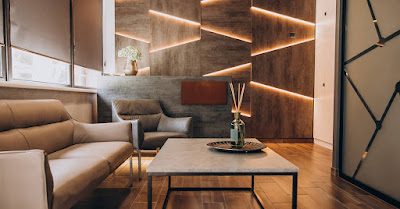Green Facade Design: ACP Sheets as Sustainable Building Materials
Sustainable building design has become a pivotal aspect of the construction industry, with architects and designers seeking innovative materials that align with environmental responsibility. Amongst the various options available, aluminium composite panels (ACPs) have emerged as a popular choice for creating eco-friendly facades. ACP sheets offer a unique combination of durability, versatility, and environmental consciousness, making them an ideal sustainable building material.
The Environmental Advantages of ACP Sheets
ACPs consist of a core material made from non-toxic polyethylene sandwiched between two layers of lightweight aluminium. This composition offers several environmental advantages that contribute to sustainable building practices.
1. Recyclability: A Key Ecological Advantage
One of the primary ecological advantages of ACP sheets lies in their recyclability. Both the aluminium and polyethylene components can be separated and reused, reducing waste and conserving valuable resources. Aluminium, in particular, is highly recyclable, with the capability to retain its quality during the recycling process. This significantly reduces the energy consumption required for producing aluminium from raw materials.
2. Energy Efficiency in Manufacturing
ACPs are incredibly energy-efficient to manufacture, with aluminium being one of the most recyclable materials on the planet. The lightweight nature of ACP sheets also contributes to lower transportation emissions during delivery and installation. By choosing ACPs as a facade solution, architects and builders can contribute to reducing the carbon footprint associated with construction projects.
3. Weathering Resistance and Reduced Maintenance
ACPs often come with finishes and coatings that enhance their resistance to weathering. This not only prolongs the lifespan of the panels but also reduces maintenance requirements. By using ACP sheets, architects can ensure that the facades of buildings maintain their aesthetic appeal for longer periods without the need for frequent repairs or replacements. This aspect of ACPs helps conserve resources in the long run.
ACP Panels: Contributing to Sustainable Structures
ACPs play a crucial role in building sustainable structures by enhancing energy efficiency, promoting recyclability, reducing maintenance requirements, and offering design versatility. Let's explore how ACP sheets contribute to sustainable building practices in more detail.
Energy Efficiency: Regulating Indoor Temperatures
ACPs are lightweight and provide excellent insulation properties when used as cladding or facade material. They help regulate indoor temperatures, reducing the need for excessive heating or cooling. By minimizing energy consumption for heating and air conditioning, ACP sheets contribute to sustainable building design by reducing carbon emissions and energy waste.
Recyclability: Reducing Demand for New Materials
The high recyclability of ACP sheets allows for the reuse of aluminium and responsible disposal of the polyethylene core. Recycling ACPs reduces the demand for new materials, conserves resources, and decreases waste sent to landfills. This aligns with sustainable building practices that aim to minimize environmental pollution and maximize resource efficiency.
Sustainability Certifications: An Added Advantage
Many aluminium composite panel manufacturers in India often hold sustainability certificates like LEEDS. These certifications contribute to a building's eco-friendliness rating and provide architects and designers with best practices to follow. By incorporating ACP panels into their projects, architects can align with global sustainability goals and contribute to creating greener structures.
Longevity and Resilience: Durability for Sustainable Designs
Aluminium cladding sheets used in ACP panels are known for their durability and ability to withstand environmental aggressors such as wind, rain, and UV rays. This resilience extends the lifespan of the structure, reducing the need for premature renovations and replacements. By choosing ACP sheets, architects can ensure that their designs stand the test of time, minimizing the environmental impact associated with frequent construction activities.
Conclusion: A Greener Future with ACP Sheets
Aludecor, an ISO certified company, is at the forefront of advocating for eco-friendly practices and green building materials. They believe that eco-friendly design should be the standard rather than a choice. ACP sheets from Aludecor are a prime example of how innovation and environmental responsibility can go hand in hand in creating a greener future.
With their recyclability, energy efficiency, and durability, ACP sheets exemplify a sustainable choice in modern construction. They offer both aesthetic appeal and a commitment to environmentally responsible building practices. By incorporating ACP sheets into their designs, architects and builders can contribute to crafting sustainable structures that align with global sustainability goals.
In conclusion, ACP sheets are revolutionizing eco-friendly facades and paving the way for a greener future in the construction industry. Their recyclability, energy efficiency, and longevity make them a preferred choice for architects and designers seeking sustainable building materials. As the demand for sustainable construction practices continues to grow, ACP sheets offer a versatile and environmentally conscious solution for creating visually appealing and environmentally responsible facades.




Comments
Post a Comment